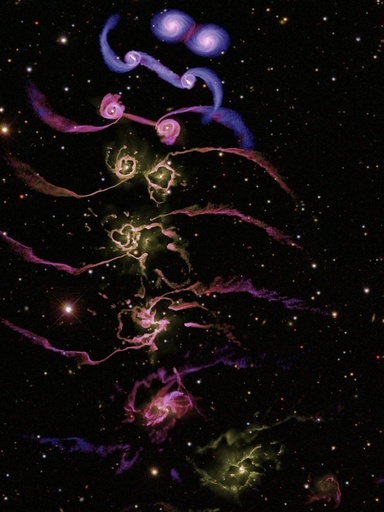This document provides
supplementary information for the above letter to
Nature.
We provide technical information about our simulation method, and
detail the equations solved for describing the physics of star
formation,
black hole accretion, and feedback processes. Where
appropriate, we give
references to relevant literature for our
simulation methodology
Supplementary
Information: Methods (PDF, 43KB).

This computer
animation
visualises the full time evolution of a galaxy collision simulation of
two spiral
galaxies that host supermassive black holes at their centres. Only the
gas distribution in the galaxies is shown. As in the figure, brightness
represents gas density while
the colour hue indicates gas temperature.
Medium quality (10 MB, 1024x768)
Highest quality (22 MB, 1024x768)
Attention:The movie has been compressed using DIVX.
To play under Mac or Windows please install the
free divx-codec software from http://www.divx.com.
Under Linux the movie can be played using
"mplayer" or "xine"
Figure:
Snapshots of the time evolution of
a collision of two gas rich (80%) spiral galaxies with black holes at
their center from a computer simulation. Color indicates temperature
and brightness the gas density. After the
merger and the formation of a large bulge, the remaining gas cools
in the central regions and reassembles in a disk component. The
black hole mass and the bulge velocity dispersion of this
system are consistent with the MBH -σ relation.
Supplementary Figure (PDF, 80KB)